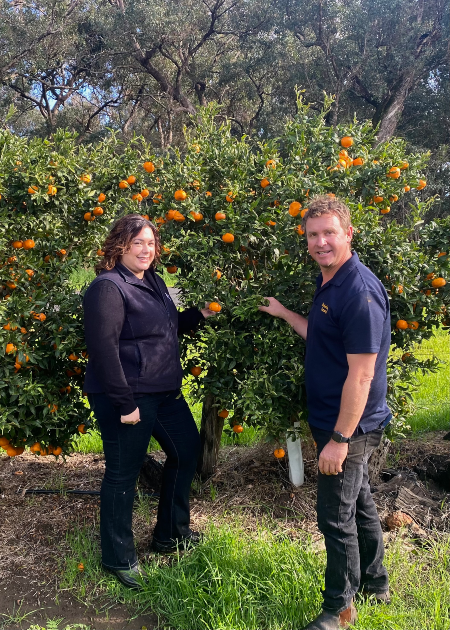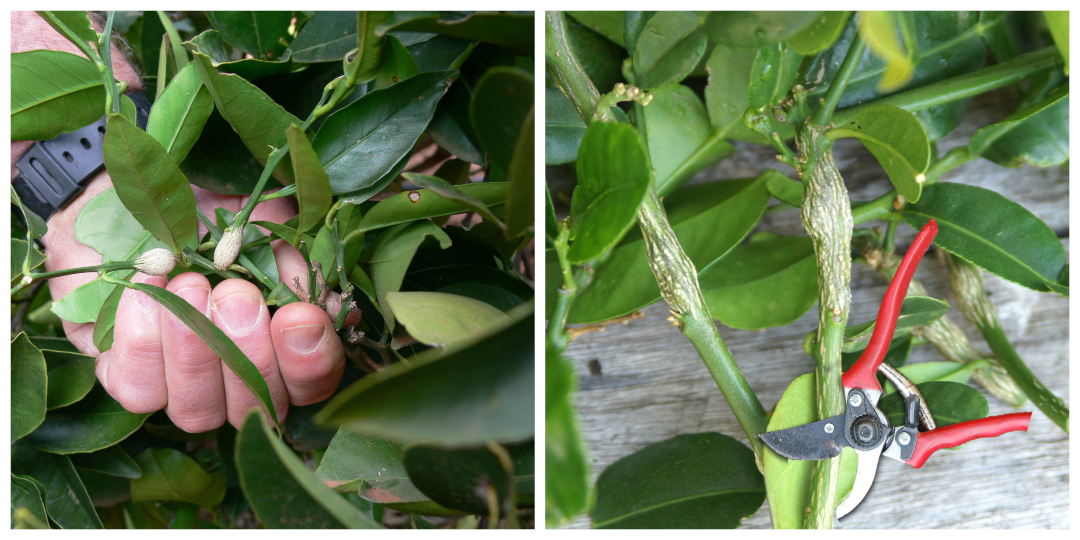Distinctive woody bulges, or galls, on the shoots and branches of citrus trees are a sign of CITRUS GALL WASP infestation; Pruning and treatment can help control this invasive pest. Home Gardeners, especially in Perth, Bunbury & Geraldton areas are urged to be on look out for this invasive pest. – Images provided by DPIRD
Citrus industry urges home gardeners to look out for invasive citrus pest
Home gardeners, especially in Perth, Bunbury, and Geraldton, are urged to be vigilant for the pest citrus gall wasp and act now to protect their own trees and those of their neighbours’. Citrus gall wasp is a destructive pest, which in severe cases can leave mature trees unproductive and deform or kill newly planted trees.
Please see details below as provided in: 22 June 2022 DPIRD Media Release:
“Citrus industry urges home gardeners to look out for invasive citrus pest”
Home gardeners, especially in Perth, Bunbury, and Geraldton, are urged to be vigilant for the pest citrus gall wasp and act now to protect their own trees and those of their neighbours’. Citrus gall wasp is a destructive pest, which in severe cases can leave mature trees unproductive and deform or kill newly planted trees.
Department of Primary Industries and Regional Development (DPIRD) research scientist Rachelle Johnstone said the pest was well established in the Perth metropolitan area and more recently had been found in Bunbury and Geraldton.
“Management of this pest is vital, not only to protect trees in our own gardens, but to protect our commercial citrus orchards, which supply fresh, delicious fruit for us to eat,” Ms Johnstone said.

DPIRD research scientist Rachelle Johnstone and citrus grower Richard Eckersley, Harvey, encourage home gardeners to be on the lookout for the citrus pest citrus gall wasp.
Home gardeners should look for distinctive woody bulges, or galls, on the shoots and branches of citrus trees, which can measure up to 250 millimetres long and 25 mm thick. Galls can be difficult to find in newly infested trees as they can be quite small.
The wasps lay eggs in new growth from September to December, and galls become visible from February.
“It is best to remove galls by pruning the branches before 30 June and dispose of cuttings in green waste, verge collection or general rubbish,” Ms Johnstone said.
“Galls removed after 30 June need to be treated before disposal to ensure larvae do not survive.
“Galls can be treated by shredding or mulching, or ‘solarised’ by placing them in a well-sealed plastic bag and left in the sun for at least four weeks. For bulk cuttings, galls can be securely covered with a tarp.”
DPIRD and industry group WA Citrus are also reminding gardeners in citrus production areas to inspect their trees and implement control measures to reduce the threat to their tree’s health and to the WA citrus industry. This includes residents living in the Moora/Dandaragan districts, south to Manjimup, and in northern areas such as Carnarvon and Kununurra.
Harvey citrus grower Richard Eckersley said if citrus gall wasp became an established pest in commercial orchards, it would be an additional cost to growers. “Growers are already stretched with increased fuel and fertiliser costs and adding another pest to manage will further increase the cost of production,” Mr Eckersley said.
Information on citrus gall wasp control is available on DPIRD’s website at www.agric.wa.gov.au/plant-biosecurity/citrus-gall-wasp-control
To report the presence of citrus gall wasp, send a photo and your suburb using the department’s MyPestGuideTM Reporter app or contact the Pest and Disease Information Service on 9368 3080, padis@dpird.wa.gov.au


Recent Comments